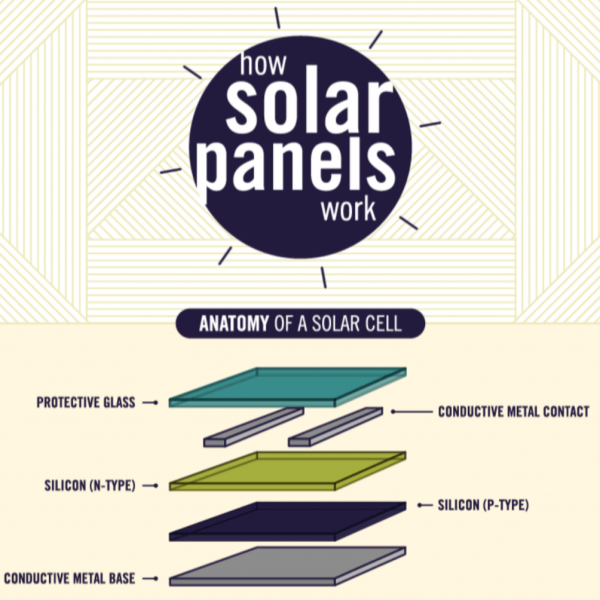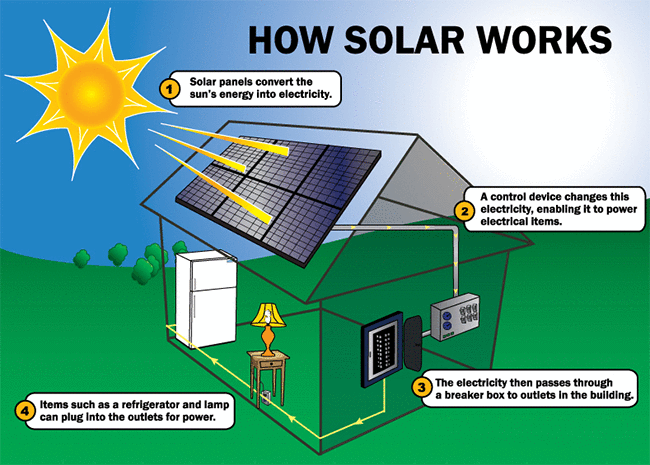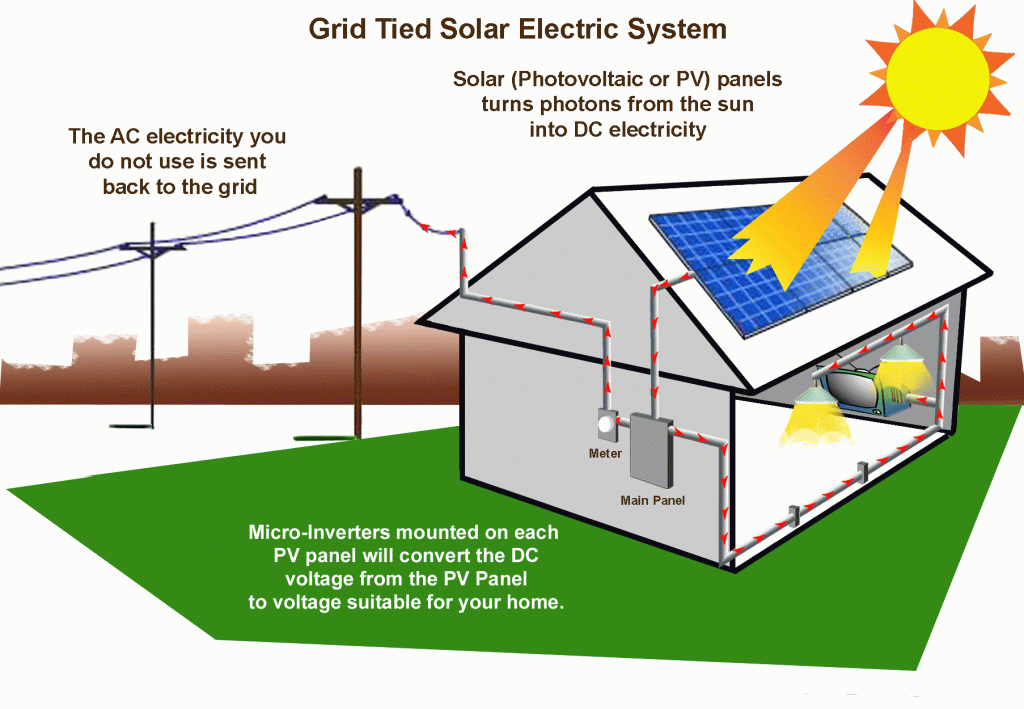What is Solar Energy System?
Solar power is the conversion of energy from sunlight into electricity, either directly using photovoltaics (PV), indirectly using concentrated solar power, or a combination. Concentrated solar power systems use lenses or mirrors and solar tracking systems to focus a large area of sunlight into a small beam. Photovoltaic cells convert light into an electric current using the photovoltaic effect.
Introduction
When people think about alternative or renewable energy, the first image that comes to mind is often large blue or black solar panels on rooftops or portable highway signs that have a small panel attached. These solar panels, also known as photovoltaic modules (or PV modules), convert sunlight into electricity, and they have been the backbone of renewable energy for decades. The Photovoltaic Effect (how sunlight is converted into electrical energy) was discovered over a hundred years ago! Yet widespread implementation of this technology has been very gradual. Only in very recent years has photovoltaics gained wide popularity as an alternative way to produce electricity.
In 1958 the first PV modules were launched into space to power satellites. Even today, solar power is the primary source of energy at the International Space Station. On Earth as well, PV has traditionally been used in areas where there is no practical source of electrical power but there is abundant sunshine. Solar panels are often used for remote applications: like powering cabins, RVs, boats and small electronics when grid service is not available. Recently, “grid-interactive” solar electric systems have started gaining momentum as a cost-effective way to incorporate solar electricity into our everyday lives. Now we can take advantage of available solar energy while still enjoying the safety net of the utility grid.

How Solar Panels or PV Modules Work

In very basic terms, a solar panel (PV module) is a device that will produce a flow of electricity under sunlight. This electricity can be used to charge batteries and, with the aid of an inverter, it can power normal household electrical devices, or “loads”. PV modules can also be used in systems without batteries. Most solar panels (properly called “modules”) are framed in aluminum, topped with tempered glass, and sealed by a waterproof backing. Sandwiched between the glasses and backing layers are the photo-reactive cells themselves, often made of silicon. On the back of the module is a junction box that may or may not have two cables coming out of it. If the junction box has no cables, it can be opened to access the electrical terminals where wires can be attached to conduct the generated electricity away from the module. If there are cables already in place, the junction box is usually sealed and not user-accessible. Sealed junction boxes are more common.
How do solar panels work and electricity?
A standard solar panel (also known as a solar module) consists of a layer of silicon cells, a metal frame, a glass casing and various wiring to allow current to flow from the silicon cells. Silicon (atomic #14 on the periodic table) is a nonmetal with conductive properties that allow it to absorb and convert sunlight into electricity. When light interacts with a silicon cell, it causes electrons to be set into motion, which initiates a flow of electric current. This is known as the “photovoltaic effect,” and it describes the general functionality of solar panel technology.
The general photovoltaic process, as described above, works through the following steps:
- The silicon photovoltaic solar cell absorbs solar radiation
- When the sun’s rays interact with the silicon cell, electrons begin to move
- Moving electrons creates a flow of electric current, captured by nodes and wiring in the panel
- Wires feed this direct current (DC) electricity to a solar inverter to be converted to alternating current (AC) electricity

How do solar panels work for your home? Step by step overview
Solar panels work by absorbing sunlight with photovoltaic cells, generating direct current (DC) energy and then converting it to usable alternating current (AC) energy with the help of inverter technology. AC energy then flows through the home’s electrical panel and is distributed accordingly. Here are the main steps for how solar panels work for your home:
- Solar panels absorb the sun’s energy and convert it to DC electricity
- The solar inverter converts DC electricity from your solar modules to AC electricity, which is used by most home appliances
- Electricity flows through your home, powering electronic devices
- Excess electricity produced by solar panels is fed to the electric grid
View this diagram for more info, Click Here.
